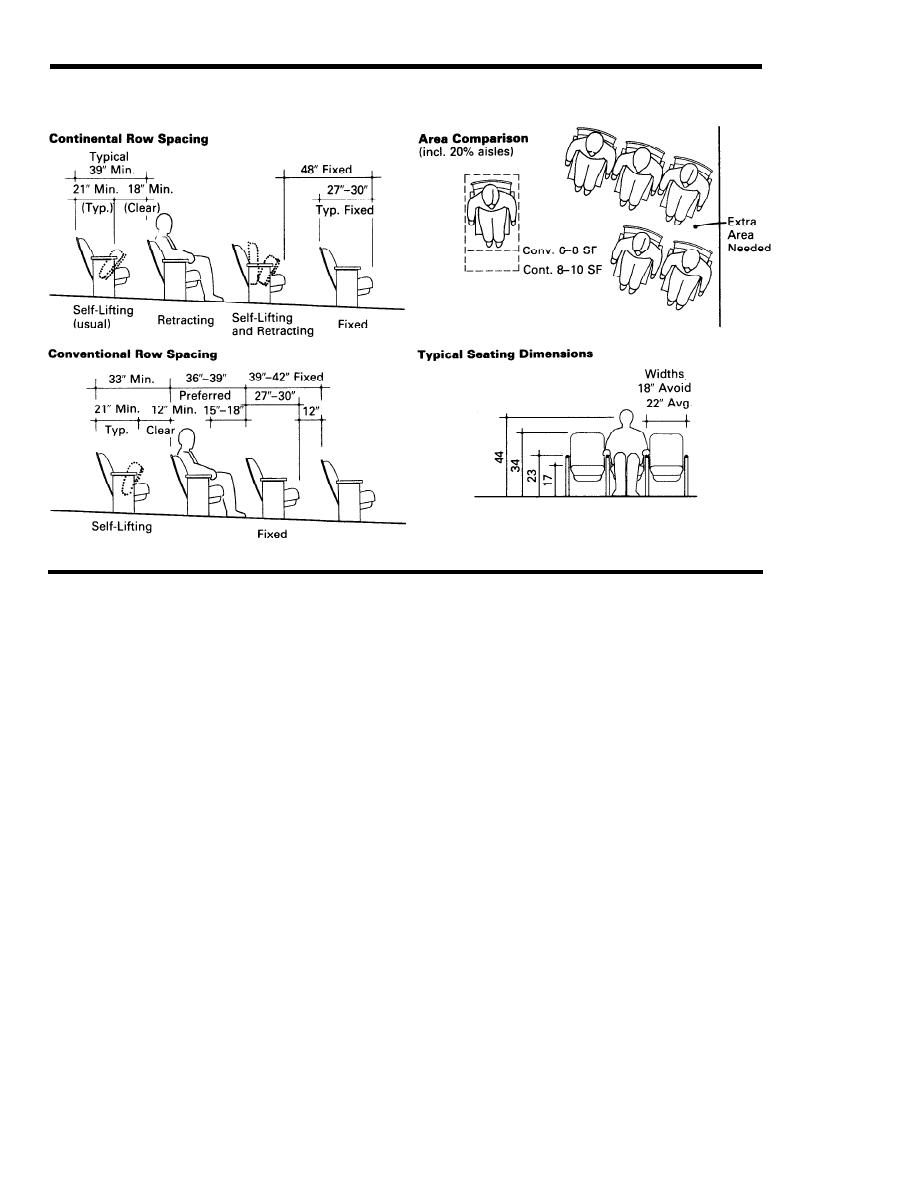
DESIGN GUIDE: MUSIC AND DRAMA CENTERS
DG 1110.3.120
CHAPTER 3: MUSIC ROOM QUALITIES
JANUARY 1981
SEATING AREA UNITS
F I G U R E 3-5.1
izing principles of Music uses, define the distri-
themselves be adjusted, but physical alteration
of the enclosure should be undertaken with re-
bution of boundary surfaces. Second, varying
straint, under supervision of a knowledgeable
the size of a Drama audience mainly influences
acoustician.
the linear and planar geometry of the House,
while varying the Music audience mainly influ-
Flexibility refers to the conditions favorable for
ences volumetric geometry.
various music types, not strictly the number of
musicians on the platform. Favorable conditions
In this section, Drama (vision) and Music (hear-
can often be accomplished by relatively small
ing) considerations will be applied to the audi-
changes in several parts of the Room, balancing
ence portion of a Room, in terms of the primary
the type of music, number of musicians and size
attributes of size, shape and arrangement. The
of the audience.
effect of varying house capacity will be studied,
but variations in the form of presentation will be
If a Music Room is to be used for Drama, it will
be easier to adjust acoustic conditions than vi-
addressed in discussion of the Stage (Section
3-6). For now, a Frontal arrangement is as-
sion criteria. The Multi-Form Room concept is
the most impractical for Music.
sumed, either legitimate drama or orchestra on
stage. Details and technical data will be treated
in succeeding sections and in Chapter 4 as
appropriate.
3-5. THE HOUSE
A. DRAMA HOUSES
1. Seating Area Dimensions
The House is one half of the Room. Investigation
The number and arrangement of seats defines
reveals two general concepts about it. Vision cri-
the net floor area of the House (an aspect of size).
teria, the major organizing principles of Drama
uses, define the distribution of people in the
Reckoning of area includes allowance for aisles
House while hearing-criteria, the major organ-
3-20


 Previous Page
Previous Page
